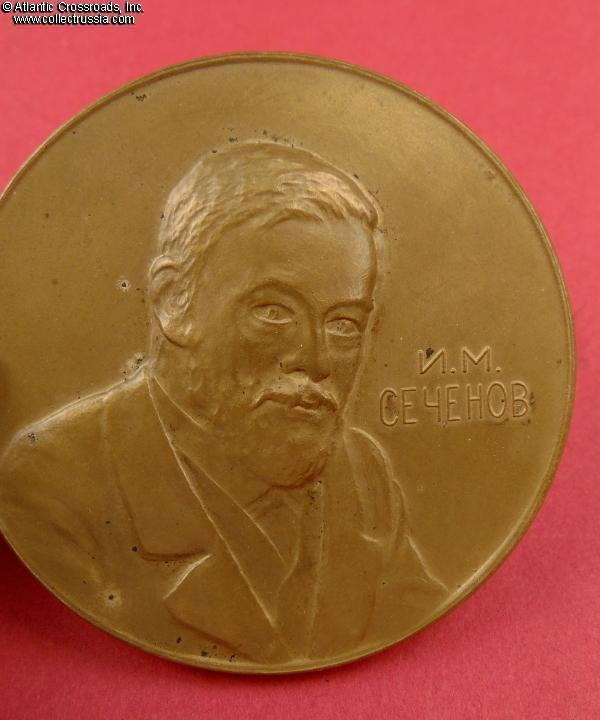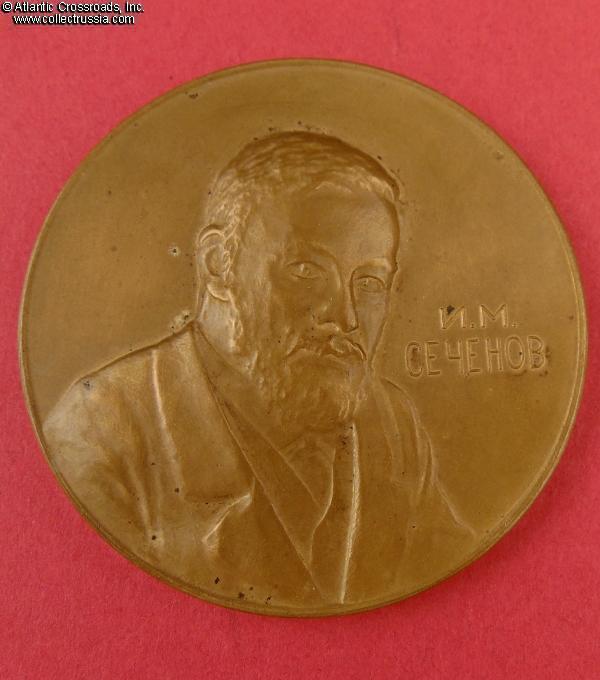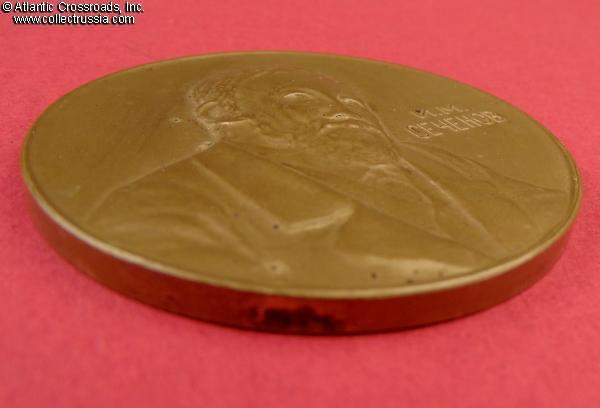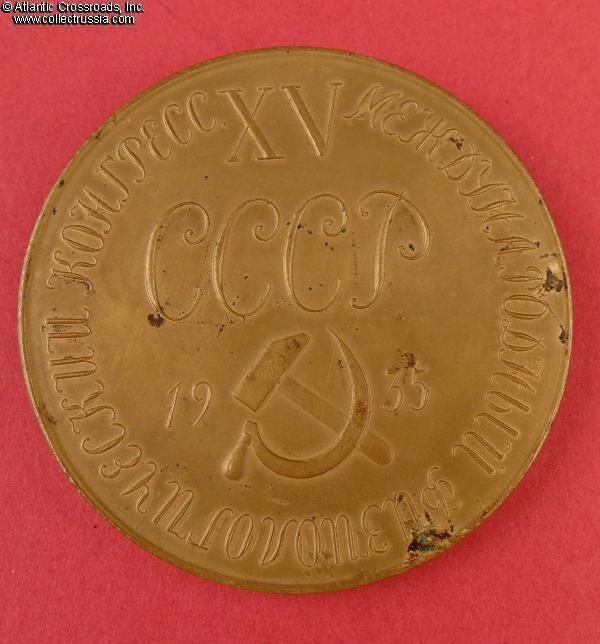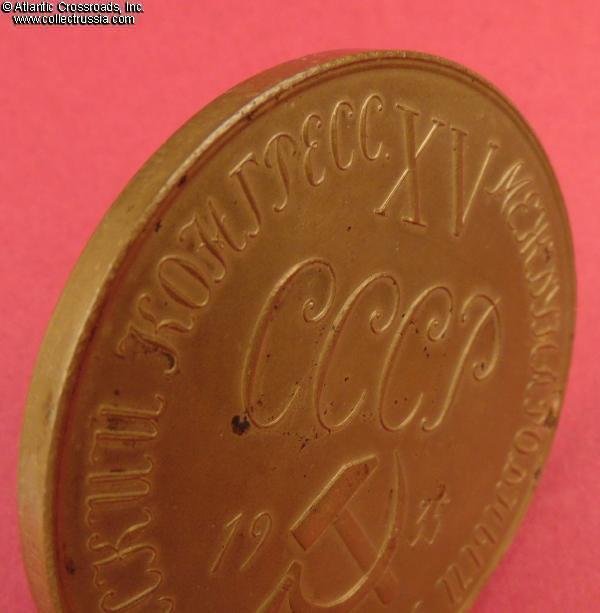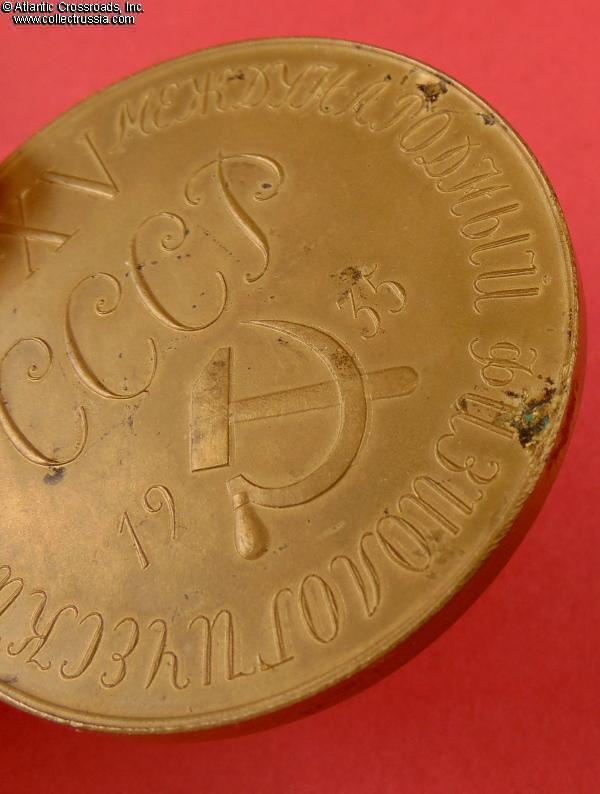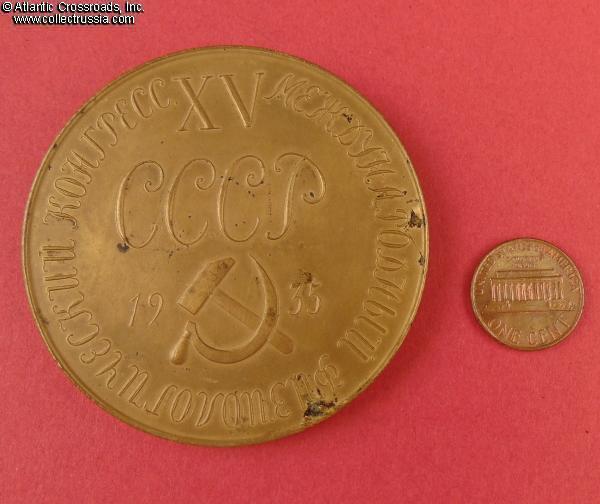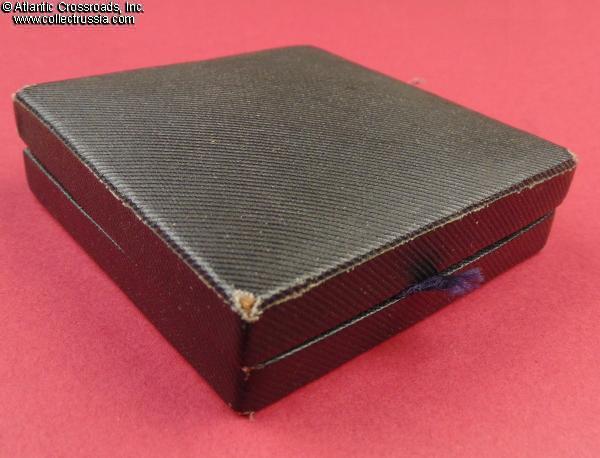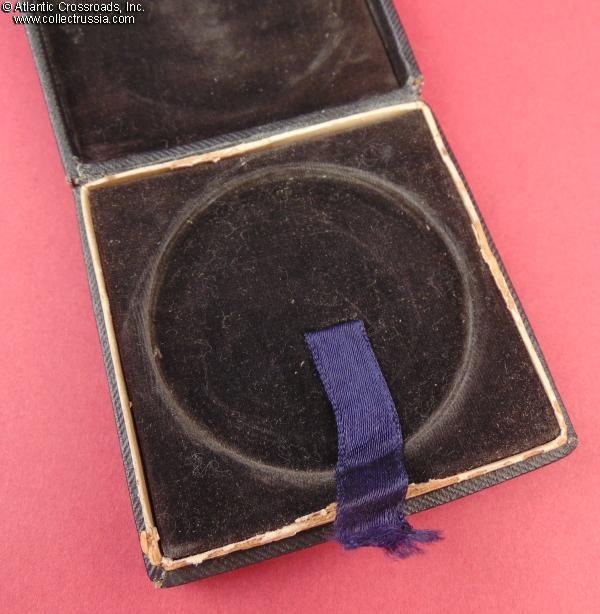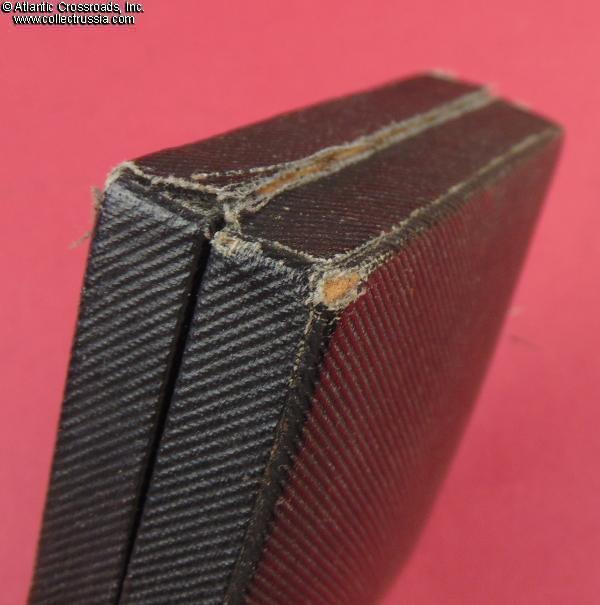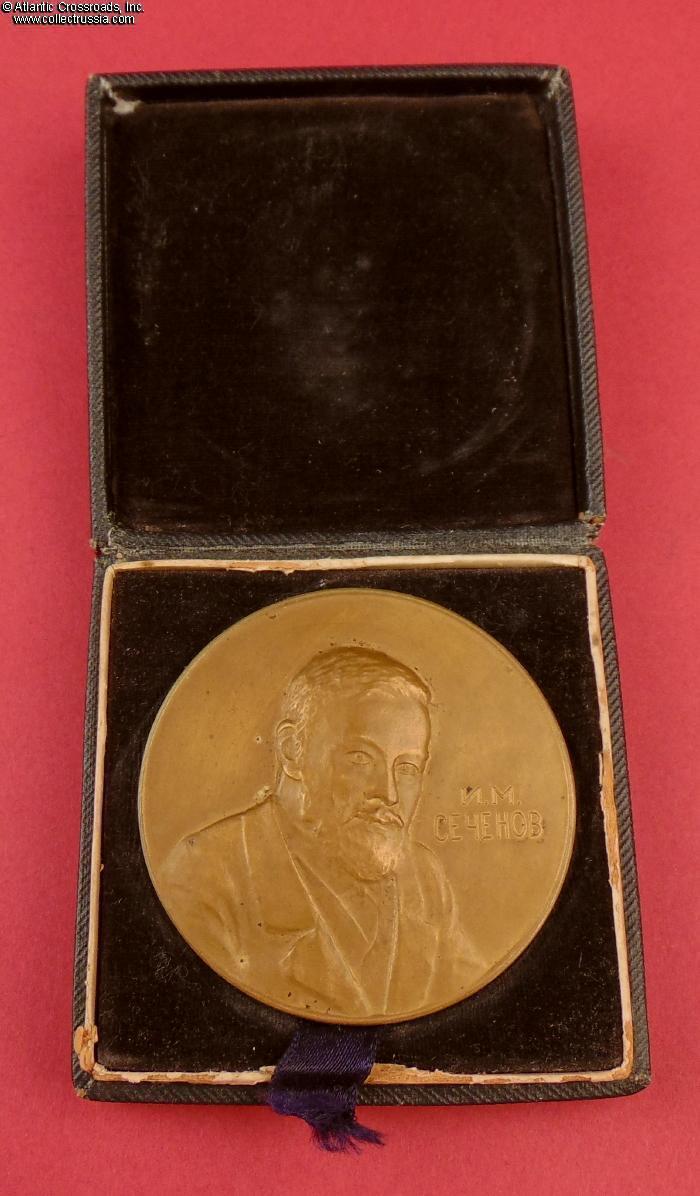
XV International Congress of Physiologists, Table Medal of a Participant, with Original Case of Issue, 1935.
The medal is in bronze, 65.7 mm wide; weighs 122.9 g. Obverse shows a bas-relief portrait of Ivan Sechenov, a prominent Russian physiologist, neuroscientist and chemist. The reverse bears inscription "XV International Physiology Congress, USSR, 1935". Note the characteristically early style of the font and of the hammer & sickle emblem.
The medal was the work of the venerable medallist Vasyutinskiy who died in 1935 (Vasyutinskiy is best known for designing a number of Imperial Russian medals, but he continued to work for the Petrograd (Leningrad) Mint after the Revolution
The medal is in bronze, 65.7 mm wide; weighs 122.9 g. Obverse shows a bas-relief portrait of Ivan Sechenov, a prominent Russian physiologist, neuroscientist and chemist. The reverse bears inscription "XV International Physiology Congress, USSR, 1935". Note the characteristically early style of the font and of the hammer & sickle emblem.
The medal was the work of the venerable medallist Vasyutinskiy who died in 1935 (Vasyutinskiy is best known for designing a number of Imperial Russian medals, but he continued to work for the Petrograd (Leningrad) Mint after the Revolution and designed several medals for the Soviet government). The medal was struck at the mint in 1935, just in time for the congress that took part in Moscow and Leningrad. There were 1500 copies made, probably reflecting the expected number of participants, both Soviet and foreign. The choice of Sechenov to be featured on the medal was apparently not only due to his very significant, internationally recognized scientific works, but also clearly for political reasons: during his lifetime, Sechenov was widely known for his science-based, materialist approach to studying human physiology and psychology. At the time, his views and research methodology were considered by many to be anti-religious, and there was even an attempt by the Russian government to prosecute him (the case was dropped before getting to trial - in sharp contrast to how similar court cases would end up in the USSR.)
The medal is in very fine to excellent condition. There are no scratches or bumps; the raised details of the portrait and lettering are perfect and crisp, free of noticeable wear. There is a single small nick to the rim at approx. 10:30 o'clock position, visible only when viewed from the side and completely unnoticeable from either the obverse or reverse. Attractive even toning to the bronze throughout with a few minor blemishes to the reverse that do not detract.
The case of issue is of the early style, wrapped in high-quality patterned black oilcloth. The interior is lined in black velvet and has a fitted nest for the medal. There is a piece of violet silk tape sewn-in for easy extraction of the medal from the box. The box is in very good condition, perfectly sound. It shows a minor amount of wear to the corners but the exterior remains otherwise intact and clean. There is minimal wear to the cardboard edges while the velvet lining is perfect and clean.
Overall, a very attractive and rare set. The medal is one of the few struck at the Soviet mint prior to WW2, well before issuance of table medals gradually became more and more common. Its chronological number in the 2005 reference guide on Soviet table medals by A. Shkurko and A. Salykov speaks for itself: it is the 25th such medal ever commissioned by the Soviet government.
/Commemorative [Table] Medal of the Soviet Period, 1919 - 1991. A. Shkurko, A. Salykov, fig. 25/.
Please note, the penny in our photo is for size reference.
$350.00 Add to cart

